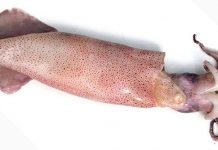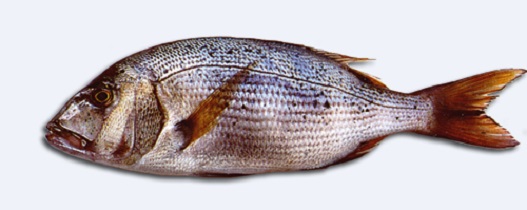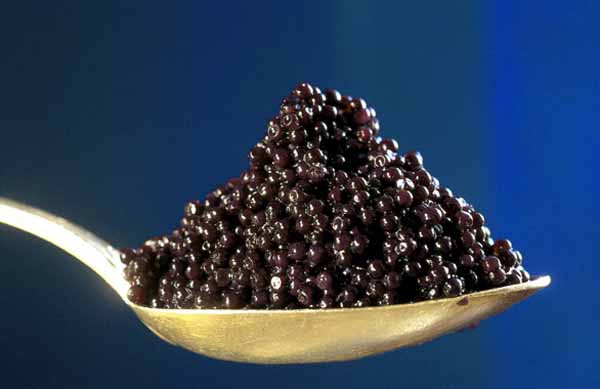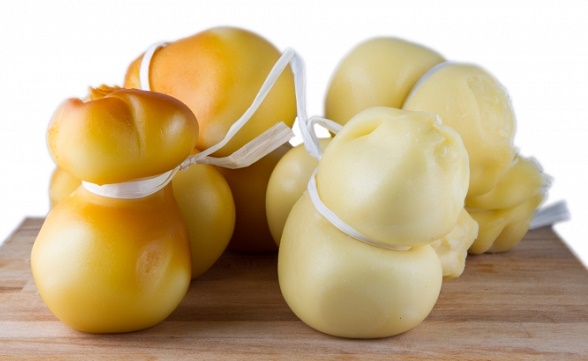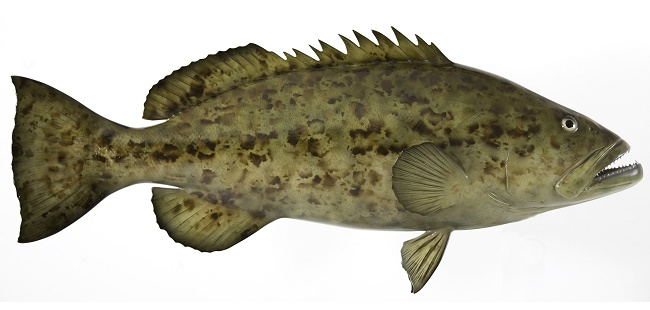
Features
The grouper, also said stone bass, is a very sturdy fish with the oval compressed body, laterally, and with a huge head. The lower jaw is slightly prominent in contrast to the upper one, and his lips are fleshy and well evident. The teeth are present on both jaws and are very sharp and long. The posterior edge of the preopercle is notched, while the operculum has three pins very short. On the head and on the lower jaw, the flakes are present, while the dorsal fin, is divided into two parts: the front part is equipped with two very strong spines and sharp, while the back, has soft rays.
The fins in the chest, are very wide, whereas the caudal fin is rounded. The anal fin, is not very visible, and is very similar to the second part of the dorsal fin, especially for the size. The back of the grouper is brown while its sides are slightly clearer and the belly to yellow, as well as the outside of her lips. The head, the back and sides of this fish are speckled with white, yellow and orange, depending on the specimens.
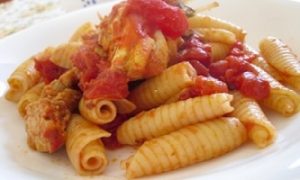
The coloring of the grouper, varies depending on the habitat in which it lives. The grouper has an exceptional ability to camouflage itself with its color, which can take on dark green hue, when the bottom where he lives is full of seaweed, or black, if he attended large caverns and reach even to the white color, while lying on the sand. The maximum length of this fish is one meter, for about sixty kilograms of weight.
In summer, the grouper, abandons the depths to move up the coast and in this period, the reproduction takes place. The grouper, is a carnivorous fish and feeds on fish, molluscs and crustaceans, although his favorite meal is the octopus, who always pursues with great ferocity and fury until it becomes his. When the grouper sighted an octopus, he does not let up, to bite after bite, it takes away the tentacles, until it is no longer able to hold on to the rocks, so it is then swallowed in one bite.
Being a very lazy fish, to catch fish for lunch, uses a very unique way, because being very impressive for its physical structure, it is very conditional, and especially because it is not dignified for the grouper, go after small fish, even when he is hungry. The method of hunting he uses is as follows: the first thing you choose a hole, maybe overlooking a cliff, frequented by small fish and expects well-hidden in the shadows. When a fish passes the naive, unaware of his presence and the danger, the grouper opens her mouth and sucks up water like a dewatering, sucking with great force their prey into its maw.
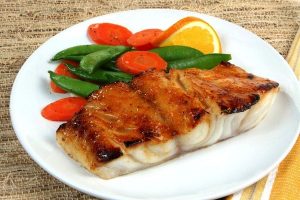
Reproduction
Much of the groupers, generate eggs between May and August entertaining. These fish are hermaphrodites proteroginicos, ie all young grouper, are predominantly female and then turn into male when they grow up. The grouper grows at about one kilogram a year and generally remain adolescents until they reach three kilograms, and at this point they become females developed. The sex change, is when the weight off will be between 10-12 pounds. The male usually have a harem of females that goes from a minimum number of three, up to a maximum of fifteen. In special cases, such as no males around, the large grouper female becomes very short time male.
The physical structure of the males, compared to that of females of grouper, appears much larger and tend to have much more aggressive. Many species of grouper, with the passage of time, have become important to the man under the gastronomic point of view so as to also become breeding fish. Most have become popular in fishing, while some species of smaller grouper, are kept in aquariums, even though, their rapid growth, the fish makes it very difficult to manage.
Uses in the kitchen
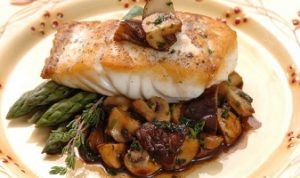
The grouper is a very easy fish to obtain, in fact you can find it at the fishshop, but only small, enough for a maximum of two portions. In the case of large fish, it is advisable to have them divide into pieces. The first thing to do if you want to cook the grouper, is to initially remove all scales, starting with the help of the tail with a knife or with a proper tool.
Completed this step you must remove the entrails, cutting with a knife the belly of the fish. It start from the tail, making a clean break, and then on to his head and also remove the gills with a sharp knife. After to remove residual blood and guts, it thoroughly under running water washes.
To taste the grouper and preserve its fragrance, it is advisable to boil or cook it. The boiling of the fish broth, is great and can reuse it for example, to cook with pasta. The grouper was delicious cooked in the oven in the classic recipe that includes the addition of potatoes.
In Italy, and in Sicily in particular, the grouper is cooked in tomato sauce to be a condiment for the pasta, one of the most appreciated plates of the Peninsula. It is, of course, also a great second course, cooked in many ways, with vegetables, baked or in the pan.

